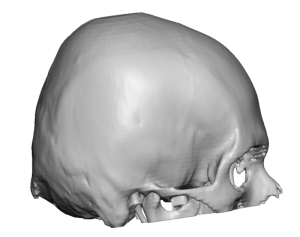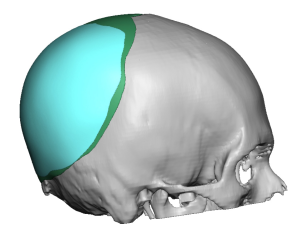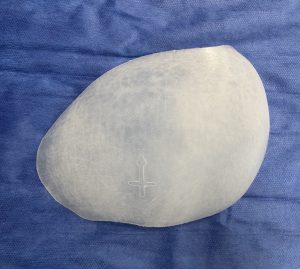Custom skull implants are the definitive method for aesthetic skull augmentation. Designed from a patient’s 3D CT scan, the preoperative planning process creates an implant footprint with varying thicknesses to achieve the desired contour. One of the key principles in implant design is understanding the scalp’s capacity to safely accommodate the added volume. This tolerance varies from patient to patient, and there is no exact way to predict how much augmentation can be achieved in a single procedure.
Because of this variability, some patients who have undergone an initial skull implant procedure may later request additional augmentation. How this is accomplished depends on the extent of change desired and the feasibility of further expansion. If the implant footprint itself needs to be altered—a relatively rare occurrence—a completely new custom implant must be designed for a remove-and-replace surgery. However, if only additional projection is desired within the same footprint, an overlay implant, sometimes called a “topper,” can be used.
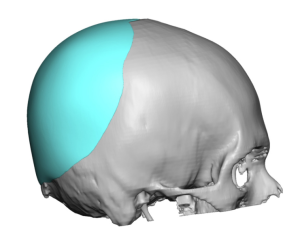
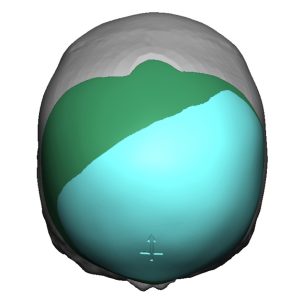
Four years later, the patient returned requesting additional fullness, primarily on the right side of the occipital region. A new skull overlay implant was designed, adding 4mm of projection and 48cc of volume—a 25% increase over the original implant. (original skull implant = green color, overlay implant = teal color)
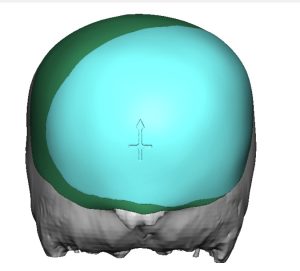
The key to the overlay concept is ensuring a proper fit. The existing implant pocket must be capable of accommodating the added volume. Over time, the capsule surrounding the implant tends to stretch and relax slightly, but only within limits. Based on my experience, a healed implant pocket can generally tolerate a 25% to 33% increase in volume during a secondary procedure.
Dr. Barry Eppley
World-Renowned Plastic Surgeon



